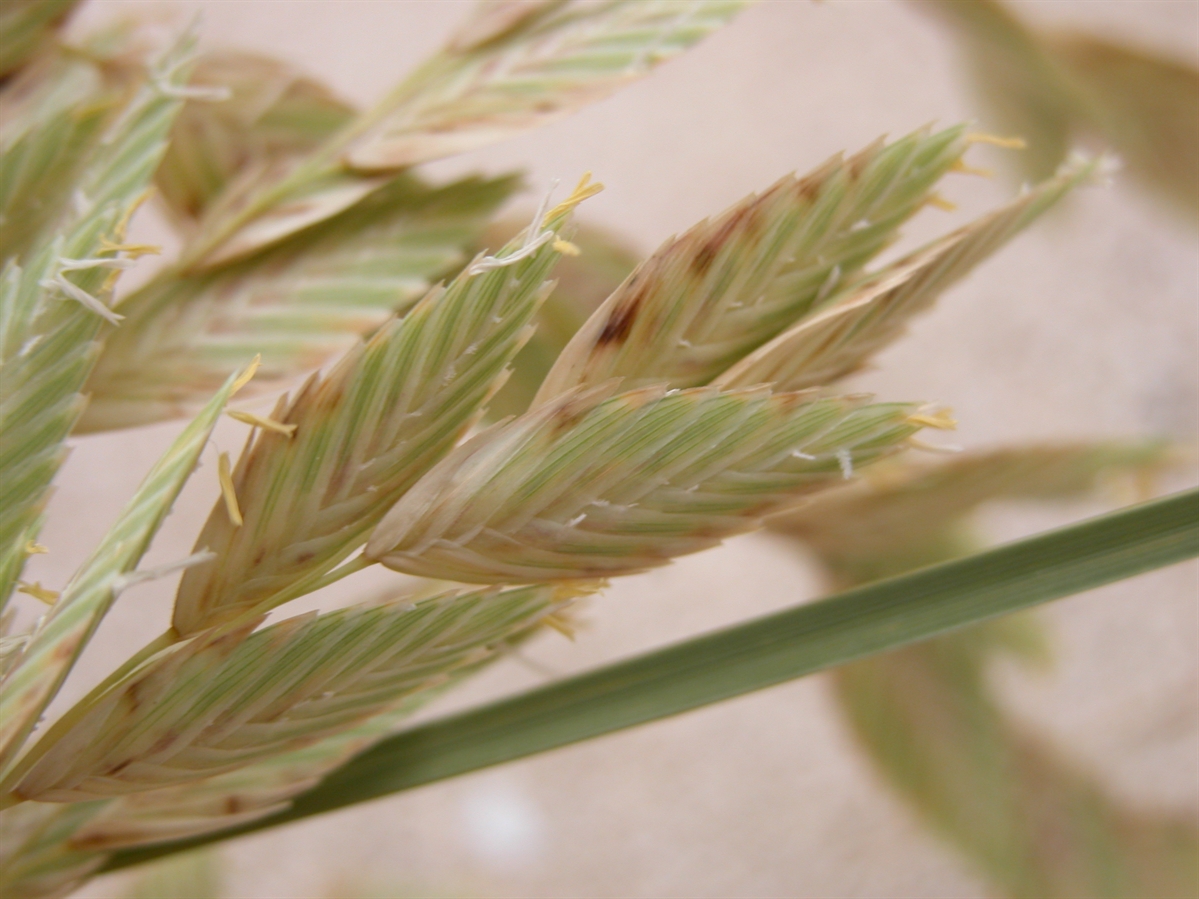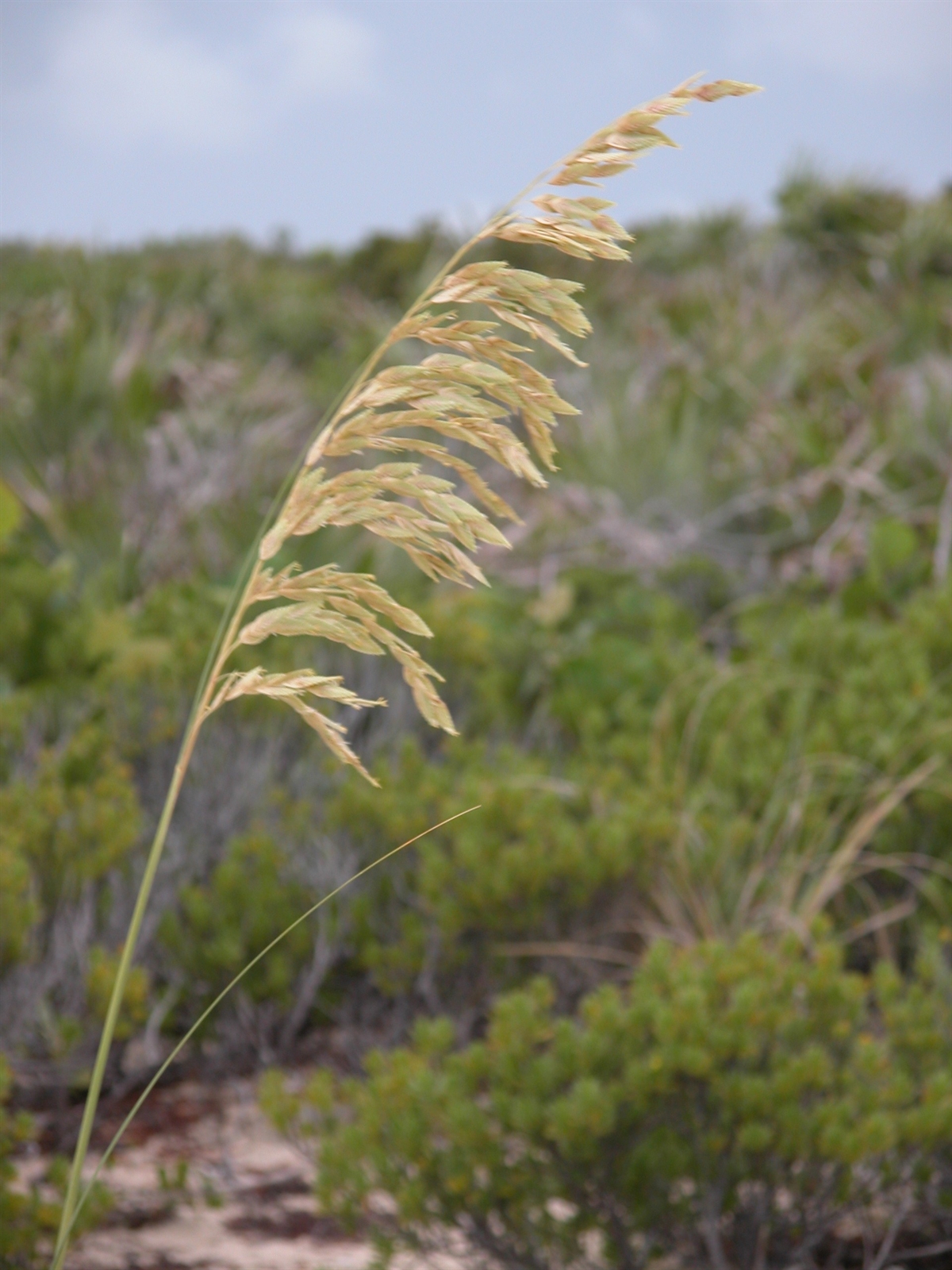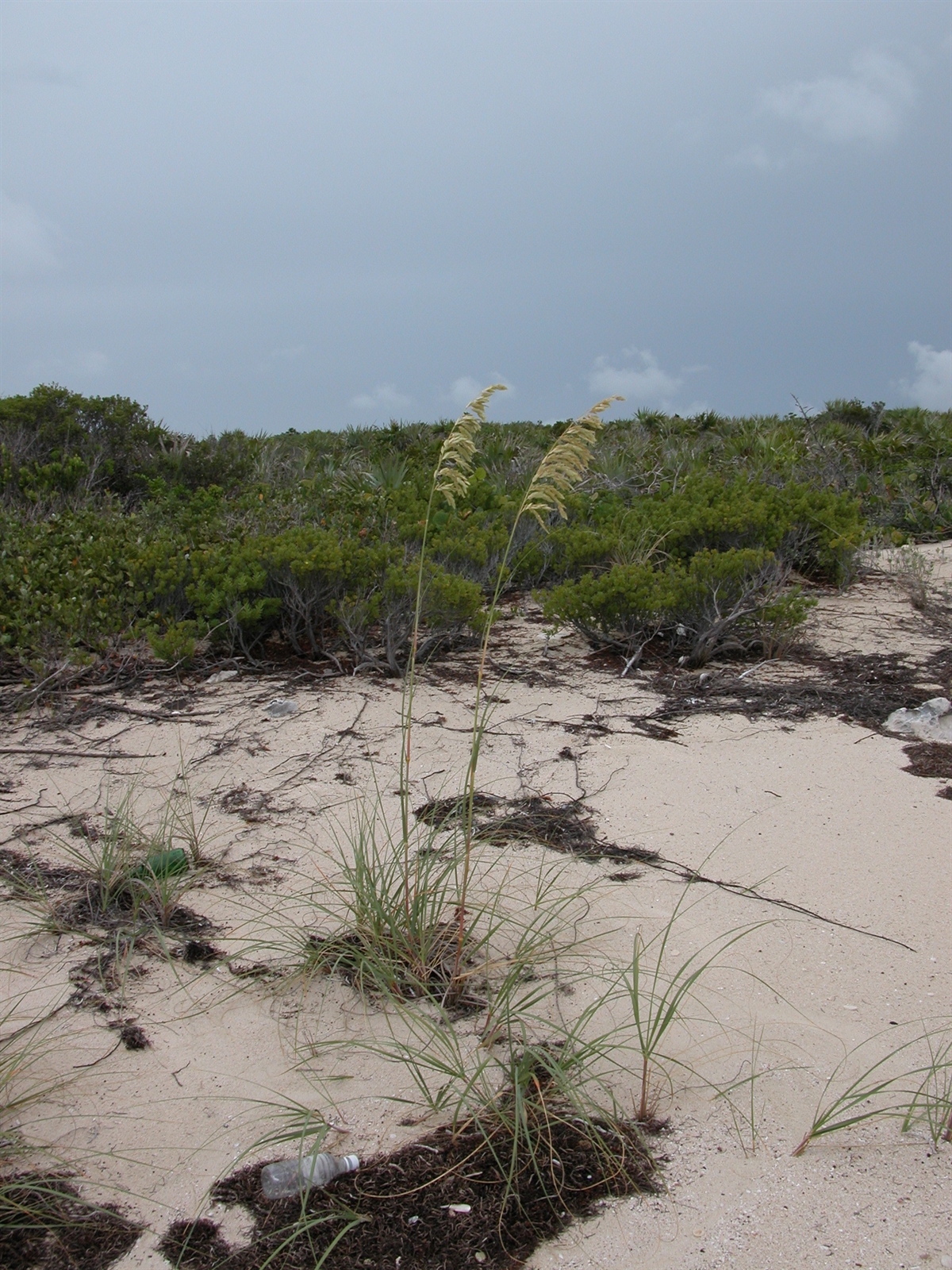Habit: Uniola paniculata grows as a rhizomatous perennial forming large colonies and up to 1.5 meters in height with a diameter to 1 cm. The leaves are arranged alternately with a sheath extending along the stem that is pubescent along its edge. At the point of divergence of the leaf sheath to the leaf blade is a small ligule. The leaves are parallel veined.
The zygomorphic flowers are arranged in terminal panicles that are up to 2 meters in height. The flowers are highly modified without identifiable structures such as the calyx or corolla. Each flowering unit is a laterally compressed spikelet at the base of which are 2 yellow brown structures called glumes. In each spikelet there are 10-20 flowering structures each is subtended by 2 additional structures (lemma and palea). The lower flowers are sterile and the upper fertile and have 3 unfused stamens and a superior ovary each with a single locule and seed. The fruit is a caryopsis.
Habitat: Uniola paniculata grows in Dunes.
Distribution: Uniola paniculata occurs on all island groupings within the Lucayan Archipelago as well as the entire Caribbean region and North, Central, and South America.
Medicinal/Cultural/Economic usage: Uniola paniculata is not known to be used medicinally in the Lucayan Archipelago.
It is an important dune species that helps create dunes by trapping sand and colonizing new areas. It is very important in maintaining healthy coastal systems that are resilient to storms and sea level rise.


